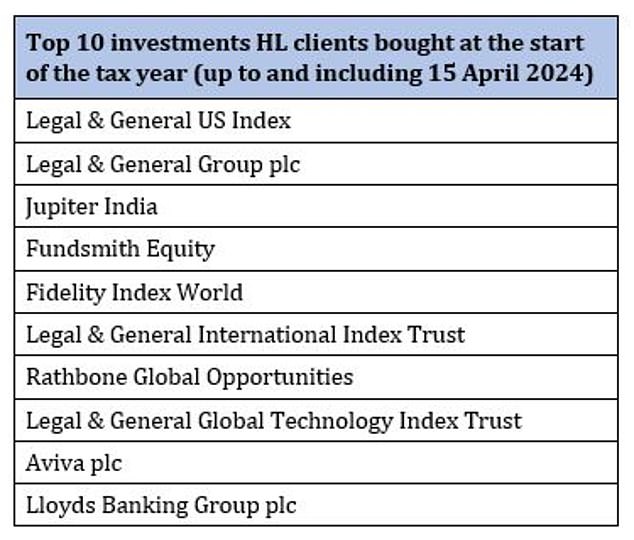
Isa early birds: They tend to get higher returns by gaining up to a whole extra year of dividends and potential market growth
The most popular investments picked by early bird Isa savers are US, global and India funds, plus some household name UK financial stocks, new research reveals.
A technology tracker fund and investor favourite Fundsmith Equity round out the top buys among Hargreaves Lansdown clients who paid into a stocks & shares Isa during the first 10 days of the new tax year.
The DIY investing platform says there was a 10 per cent increase in the number of its early birds this year, and a 31 per cent jump in those who immediately maxed out their whole £20,000 annual Isa allowance.
Early bird Isa investors tend to get higher returns over the long term by gaining up to a whole year of dividends and potential market growth ahead of those who leave it until the last minute – although in some years the laggards manage to dodge nasty market falls.
The increase in early bird investing this year shows investor confidence is clearly alive and kicking, according to Hargreaves’ head of investment research Emma Wall.
She notes the top buys list below is a continuation of trading trends over recent months, with the US, India, banks and tech dominant, and highlights ‘a mix of momentum and income’.

But Wall adds: ‘This is a more diversified list than through 2023, in which just tech dominated the top 10 buys lists, and for an Isa wrapper, which we typically consider an investment timeframe of 5-10 years, these are suitable selections.
‘However, investors should consider the correlation between some of these selections and ensure that by buying into areas of the market that have done well they may be increasing portfolio biases.’
Hargreaves recently analysed the characteristics, behaviour and investment performance of early bird Isa investors.
It found someone who invested their full Isa allowance in a global tracker on the first day of the tax year for the past decade would have seen their investments grow to £360,500, compared with £322,500 if they left it to the last day.
Men are more likely to be early birds than women. Some 62 per cent of Hargreaves Isa clients are men, but men made up 68 per cent of its early birds in 2023, and 67 per cent this year.
The firm put this down to men tending to be on higher incomes than women, and more likely to be higher and additional rate taxpayers with an incentive to protect investments from dividend tax and capital gains tax.
People aged 30-54 are most likely to get started early on Isa investing, followed by those aged 65-80.
And Hargreaves found people tend to be wedded to being either early birds or last-minute dashers when it comes to their Isa investing habits – only one in 100 people invest at the end of one tax year and the start of the next.



